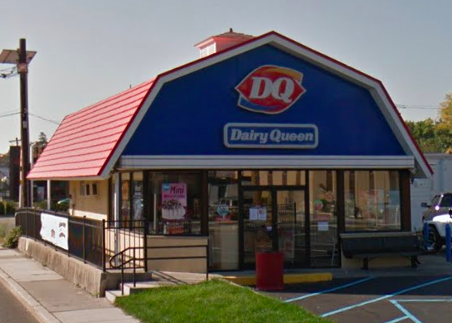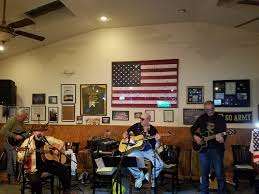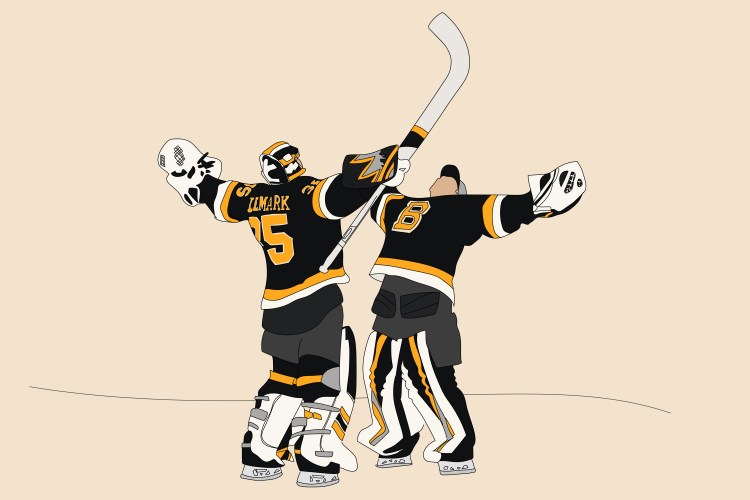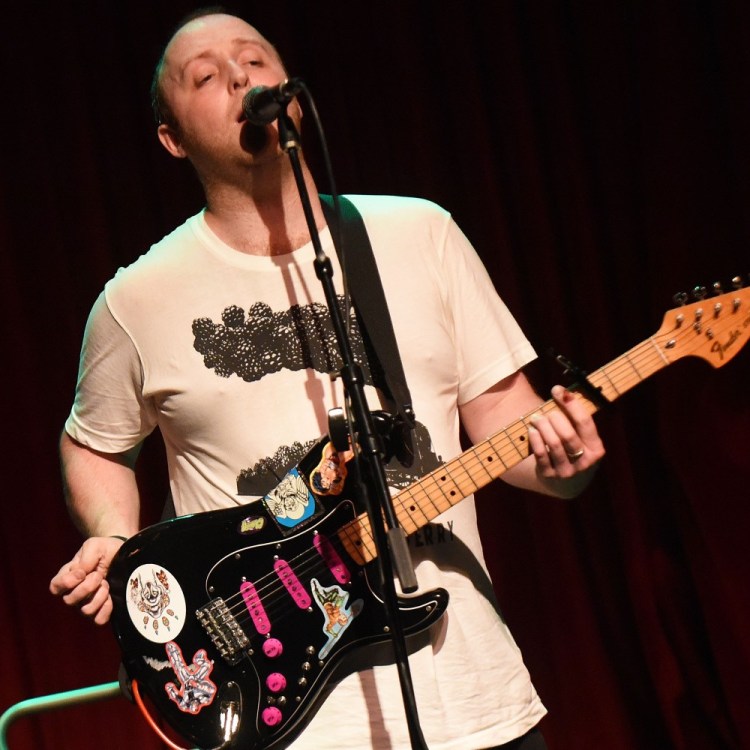It is the story of a young man, an artist, full of the arrogance of the young and the insecurities of the unproven, wending his way through the gilded suburbs of New York City. He stumbles upon a thoroughly modern, flippant, trendy young woman; she belongs to her era, and the era belongs to her. He seeks to seduce her with art and wit and modern conveniences, only to be left with the words of poets and pop stars resonating in his fractured, forever altered soul.
I am, of course, talking about “Ariel” by Dean Friedman, a popular song released in 1977. It chronicles the voyage of a sensitive, romantic seeker as he journeys through the brutalist malls, wastelands, bedrooms, and dancehalls of Paramus, New Jersey. Although it was not a gigantic hit, “Ariel” is one of the most memorable songs of the era.
It was my great good fortune to be sentient in the 1970s, though I spent a significant part of it sulking in suburban classrooms, imagining that it would be very interesting indeed to be Lance Loud or Eric Idle or perhaps some combination of both (which is to say, Ray Davies). Manhattan was a smudge of smoke to the West. It could be seen through my bedroom window during winter, when there was no green on the trees to hide its mystery. My imagination lived there even if I did not.
I felt like a foreign traveler in that strange, dissonant land of tennis lessons and Lincoln Continentals, Puka beads and painters’ paints, Frye Boots and feathered hair. I built a bedroom world out of All Things Outsider: The Kinks and Quentin Crisp, Abbie Hoffman and Albert Brooks, Ten From Your Show of Shows and On Your Feet or on Your Knees.
But there was a song set in the rolling smoke lands of New Jersey; it’s power arched across the wide, iron-colored Hudson, and strode over the spires, canyons, TV antennas and water towers of filmy, sepia colored 1970s Manhattan; it then slid over the twists in the span-interrupted East River, shimmied over the low peaked roofs and traffic knots of Queens, and sighed through the tall oaks and stuccoed Tudors of Great Neck to reach my hungry heart.
“Ariel” told my story, even if I knew not Paramus from Patagonia. Even though it celebrated the very existence I so ached to escape, it painted the leafy commuter-town life in such precise and beautiful terms that it could not help but reach my heart and say, “This is you, even if you deny it, lad.”
The song is also an absolutely exquisite snapshot of a moment in time, full of deliciously archaic references. Like a miniature The Great Gatsby, or even Joyce’s Ulysses, “Ariel” works on two levels: It is both masterfully constructed pleasure in and of itself, and a rare picture of ordinary lives, seeking love and meaning, in an extraordinary and lost time.
Let us unwrap it, shall we?
Way on the other side of the Hudson,
deep in the bosom of suburbia
This brilliant first line is a little more complicated then it might first appear.
First and foremost, it sets the scene, and lets us know that the story we are about to hear takes place in northern New Jersey, the only (logical) locale that is both suburban and “on the other side of the Hudson.” Arguably, parts of Rockland and Orange County in New York are both commutable and “on the other side of the Hudson,” but the towns in those counties are virtually never referred to as suburban.
But this is where it gets interesting: The author very clearly states he is talking about something that takes place “on the other side of the Hudson, deep in the bosom of suburbia.” In other words, the narrator is not in suburban New Jersey while penning this tale. I interpret this to mean that the song is a memoir, an account of a past event, written from the point of view of someone who has moved away from New Jersey and on with his life. I think this is very important to understanding “Ariel.”
Of course, it is always possible that the narrator is living away from New Jersey “on the other side of the Hudson” at the time of the narrative, but I shall explain later why I consider this unlikely.
But back to the power of the phrase, “the bosom of suburbia.”
The first two lines of “Ariel” reaches out to all listeners in the commutable suburbs of New York City, creating a rather wide geographic swath of empathy. Likewise, by establishing that the narrative takes place in a New York City suburb circa 1976/’77, Friedman was saying something fairly specific about the people we are about to meet in the song. In the era before the unifying factors of cable television and the Internet, young people in a suburb of New York City would be a distinctly different breed from young people in suburban Los Angeles, St. Louis, Phoenix, etcetera. Friedman (and the contemporary listeners) would have known this, and this location information at the top of the song helps the listener form a mental picture of the characters in the narrative.
I met a young girl
In 2018, if one sings or speaks about a “young girl” who one might pursue for the purpose of sex or romance, you would likely be talking about someone over the age of 18. However, Friedman’s very specific use of “young girl” (as opposed to “young woman,” “Pretty girl,” “cool girl,” “tall girl,” etcetera) would indicate that Ariel was “young” by contemporary mid-1970s standards. Therefore, I think this almost certainly places Ariel as being under 18.
If it was simply a case of Friedman needing the additional one-syllable modifier of “young” in order to make the line scan, he could have just as easily used any number of adjectives. Friedman makes many specific and deliberate choices throughout “Ariel,” so there is very little reason to believe that he did not choose the modifier “young” intentionally.
She sang mighty fine,
Tears on My Pillow and Ave Maria.
“Tears on my Pillow” was a hit for Little Anthony and the Imperials in 1958 (it’s important to note that “Ariel” was written and recorded before a cover of “Tears on my Pillow” appeared in the hit movie Grease, in a version recorded by Sha Na Na); “Ave Maria” is a Latin prayer, set to music by Bach.
Here is the simple interpretation of that couplet: Friedman is letting us know that “Ariel” is an unusual girl, and that instead of singing contemporary pop hits or hip or credible rock numbers, she favors singing oldies and dramatic religious songs.
However, there is an alternative interpretation, which I favor: At no point in the narrative does Friedman ever specify where and when the narrator heard Ariel sing “mighty fine.” This leaves open the possibility that the two songs cited are not actually songs the narrator heard Ariel sing, but the songs that pop into the narrator’s head while he thinks about Ariel. This somewhat radical interpretation makes a little more sense if you think of “Tears on my Pillow and Ave Maria” as the narrator’s seven-word commentary on the bittersweet experience of courting and dating Ariel.
Standing by the waterfall in Paramus Park
Although there are many famous waterfalls in New Jersey (Patterson Falls, relatively near the setting of “Ariel,” is especially noteworthy), “The waterfall in Paramus Park” was an indoor, man-made waterfall inside a major mall complex, Paramus Park Mall. Only someone familiar with northern New Jersey would be cognizant that Friedman is actually writing about a mall, and not a natural attraction. This allows for a powerful connection between the songwriter and certain exclusive listeners, who would instantly react and think, “Hey, I know that place! What is it doing in a song on the radio?”
But there is much more going on here than just putting a pin in a map: Friedman is telling us an enormous amount about the social and cultural setting of the song.
In the mid-1970s, gigantic indoor malls were the height of modernity, and represented a new level of style and convenience for American shoppers. Also, at the time of “Ariel,” these malls represented a new locus for social engagement for teenagers and young people. By 1977, the caricature state-of-the-art setting for teenage engagement was no longer the soda fountain, the playground, the school steps, or even the backseat of a car; it was the mall.
By letting us know that the narrator and Ariel met in a suburban New Jersey mall, Friedman is being as deliberate and specific as if a contemporary songwriter let us know that not only did his lovers meet online, they met on Tinder.
She was working for the Friends-of-BAI
She was collecting quarters in a paper cup.
WBAI was – and remains – a non-commercial radio station in New York City that has a very strong link to left wing and progressive programming. Being told that Ariel was raising money for WBAI would be (very) similar to noting that a woman raised funds for Bernie Sanders. In other words, this is not an accidental association or throwaway line: The narrator wants us to know a great deal about Ariel, in just a few words.
She was looking for change and so was I.
The narrator wants a change in his life, and perhaps unrealistically he is seeking it in the arms of a girl he does not yet know; Ariel is merely seeking a donation for a left-wing radio station. These conflicting interests likely foreshadow a melancholy conclusion to the narrative.
She was a Jewish girl. I fell in love with her.
This is a fascinating and clever line – and a little deceptive. It appears to be about Ariel (and for the purpose of further sketching her character), but it is actually about and for us, the listener.
Although this line incited some controversy (and Friedman was urged to delete it), it very efficiently achieves a prime goal of the songwriter: The identification of Ariel as Jewish creates a powerful bond of empathy between the artist and the potential listener. Friedman could be reasonably certain that a significant portion of the potential audience for “Ariel” would be introduced to the song via NYC-based freeform FM radio stations like WLIR or WNEW. He could also be reasonably sure that a not insignificant portion of that potential audience would be Jewish. Friedman wants the listener to perk up and think, “Now I really am positive this song is about me, because I pine for Jewish girls in my classroom or at the mall every day.”
She wrote her number on the back of my hand.
The relative ease of jotting down phone numbers directly into your cell phone has made this one of the numerous archaic but charming references in “Ariel.” “Ariel” is by no means the only contemporary song that mentions this phenomenon.
I called her up
Friedman is uncharacteristically sloppy here, indicating a passage of time without specifying how much time has elapsed between when Ariel wrote her number on the back of the narrator’s hand and when he called her. In a song absolutely riven with specifics, this is an unusually vague moment in the piece, and frankly, it bothers me. Fortunately, this kind of loosey-goosey approach is the exception, not the rule.
I was all out of breath, I said,
“Come hear me play in my rock and roll band.”
It is now revealed that the narrator is a musician. A secondary theme of this memoir is that the narrator (who, we recall, is writing all this from the “other,” i.e., eastern side of the Hudson, most likely New York City) is remembering when he was a struggling musician. This sub-theme will return.
I took a shower and I put on my best blue jeans.
I picked her up in my new VW van.
A modern listener is likely to interpret this line differently that a contemporary listener. Today, we think of the VW Van as a somewhat gimmicky, “summer of love” mode of transportation; however, circa 1976/77, it would have been a fairly standard low-budget/no-frills manner of transport for a young person of limited income, and especially utile if you had band equipment to haul around.
She wore a peasant blouse with nothing underneath.
I said, “Hi.” She said, “Yeah, I guess I am.”
These are two of the “hook” lines of the entire piece. For anyone who came of age in the mid-1970s, the words “peasant blouse” instantly evoke the era as much as the words “Dorothy Hamill,” “Bee Gees,” or “Chevy Chase.” Virtually any young person who heard “Ariel” knew women who wore peasant blouses, and likely also knew one or two who wore nothing underneath; but to hear it mentioned in a pop song was extraordinary, like finding your private thoughts broadcast on the radio. A large part of the appeal of “Ariel” is finding an everyday story set in a pop song.
In addition, this line underlines an important contradiction about Ariel: Ariel is both a “normal” girl (she wears a peasant blouse, like every third girl in your 10th-grade class) and a bit of an anti-establishment type (she wears nothing underneath). In other words, she could be “any” quirky girl you would encounter in a 1970s suburban New York high school or state college.
Ariel…
We finally hit the extraordinary chorus. Unusually, Friedman goes all-out on the first chorus, choosing not to hold any harmonies or secondary melodies in reserve. Most pop songs, then and now, create a dynamic where each succeeding chorus repetition adds something additional to the arrangement; that doesn’t happen on “Ariel.” The likely intent of this is to underline that this song is an homage to the doo-wop and greaser pop of the late 1950s and early 1960s. The influence of the Four Seasons is especially prominent; in fact, if Friedman had added stomps and handclaps to the chorus (as he surely must have been tempted to), it could have been a perfect Four Season impersonation (Joseph E. LeDoux, the esteemed neuroscientist and muscian, suggests that “Ariel” is “the missing link between The Four Seasons and Fountains of Wayne”). Although the production value is completely contemporary (and wholly in keeping with the midtempo songs of, say, Andrew Gold or Stephen Bishop), the chorus, and much of the arrangement (consider the “traditional” greaser-rock bass line played by the piano) is pure doo-wop/greaser rock
There is great meaning to this homage: Friedman is trying to tell an old-fashioned tale about a modern girl in a manner that is both old-fashioned and modern. Styles change, but boy/girl romance remains the same.

We had a little time, we were real hungry.
We went to Dairy Queen for something to eat.
I believe we can make a fair guess at the location of the specific Dairy Queen Ariel and her suitor are visiting, and we shall discuss this shortly.
She had some onion rings. She had a pickle.
She forgot to tell me that she didn’t eat meat.
This adds a little more dimension to the portrait of Ariel as a “typically” anti-establishment woman, and this specificity also increases the odds that she is like someone the listener might know. We can also deduce that Ariel is not a strict vegetarian, because she is willing to eat something that was (very likely) cooked on the same grill as the meat. It is possible that Friedman was making a commentary on the somewhat superficial nature of Ariel’s vegetarianism. If this is the case, it adds to the portrait of Ariel as someone who is “everyday quirky,” not the “extraordinary” kind of quirky that would insist on inquiring if the onion rings were cooked on a different grill than the meat.

I had a gig in the American Legion Hall.
It was a dance for the Volunteer Ambulance Corp.
Two important, beautifully specific lines: We know a lot about Ariel, but this tells us a little more about the narrator. The narrator’s gig is not at a local music club, or even in a friend’s basement or garage; it is at the American Legion Hall. This is very significant. These venues were frequently rented out by organizations (like the Volunteer Ambulance Corp) that hired cover bands playing relatively mainstream music. Friedman is letting us know that the narrator is, at this point in his life and career, neither an established nor a hip musician.
Here we note that it is likely that the American Legion Hall that Friedman is writing about is American Legion Post 170 in Rochelle Park, N.J. It is (by far) the closest American Legion Hall to the events in Paramus described earlier in the narrative. We also note that there is a Dairy Queen on the very same block as this American Legion Hall Post 170 (and this would possibly explain why the narrator chose to dine at Dairy Queen, in many ways an unusual choice for a first-date supper). Perhaps fans of “Ariel” will make a pilgrimage to these sites.
She was sitting in a corner against the wall.
She would smile and I melted all over the floor.
These are the most “ordinary” lines in the song (even the one-word chorus has to be thought of as peculiar, since Ariel was by a very unusual name at the time — The Little Mermaid would not be released for another 12 years), and amongst the only lines that make no extraordinary description of character or place. But they are essential to moving the narrative along, and creating the bond with the “traditional” boy/girl doo-wop and pop songs Friedman is emulating with “Ariel.”
We then return to the extraordinary chorus.
Following the chorus, there is a sax solo. The less we say about this, the better. Sax solos in pop songs are to the 1970s what culottes were to the 1980s. In other words, they are an abomination unto the eyes of the Lord, and let’s just leave it at that.
Then…
I took her home with me.
The line (perhaps deliberately) leaves open the question of whether the narrator lives on his own or with his parents. As stated a number of times in this essay, Friedman is a very detailed writer, and I find it curious that he leaves an important issue like this open to interpretation. If I had to hazard a guess, I would say the narrator does live with his parents – perhaps in the basement — and the memoirist is embarrassed to admit this. Here is the reason I came to this conclusion: One is tempted to say that if a hopeful musician, like the narrator, decided to move away from home and to their own place, they would probably not move to a flat in (or near) Paramus. Once they “made the move,” they would go to, say, Manhattan, or Hoboken, or Weehawken, or one of the music-friendly communities on the Jersey Shore. Therefore, I am positing that at the time of the events detailed in “Ariel,” the narrator is living with his parents, and the song offers no evidence whatsoever to the contrary.
As alluded to earlier in the piece, it has been suggested that we cannot rule out the possibility that the narrator has taken Ariel back to an apartment in New York City. But I find this unlikely for any number of reasons:
For instance, there’s the driving time between Rochelle Park, N.J. and most New York City locations. The only feasible opening for this potentiality would be if the narrator lived in the Washington Heights neighborhood of Manhattan; if Ariel and her suitor encountered only light, late-night traffic, parts of Washington Heights are only 20 minutes from Rochelle Park. However, it could have taken them another half hour (or more) to find a parking space, and surely this would have merited some commentary from Friedman (not to mention the romantic drive across the George Washington Bridge, with Manhattan and it’s spires spread in front of them)?
But most significantly, from first to last, “Ariel” is a song of the suburbs, and I do not see Friedman veering off that geographic theme, especially at this crucial juncture of the piece. It seems very unlikely to me that Friedman would place his narrator as Manhattan-based at the time of the events detailed in “Ariel,” without specifying this. He literally speaks about the suburbs as a welcoming bosom, not from the perspective of an outsider, an immigrant, or a visitor. As I have said multiple times, this is a memoir, not a contemporaneous account.
The next few lines are absolutely delicious on every level, and reveal a great deal of detail about the lost era of “Ariel.”
We watched some TV,
Annette Funicello and some guy going steady.
In the New York/New Jersey area at the time of “Ariel,” there would have been five commercial television channels; none of them would have been showing first-run movies. The kind of fare described here – a hokey beach comedy from the early 1960s – would have been very typical of the programming that would have been on the air after 11:30 PM, likely the time the narrator and Ariel got back from the gig.
Just as importantly, the specific reference is an allusion to the spirit Friedman is evoking throughout the whole song: “Ariel” is an update/retelling of the boy-girl romances, in both film and music, typical of the late 1950s and early 1960s. In fact, we can take that a little further: “Ariel” is an Annette Funicello/Frankie Avalon movie, re-set in suburban New Jersey in the mid-1970s.
I started fooling around with the vertical hold.
This is both a terrific double entendre, and another reminder that this song is replete with archaic references. It is likely that no one under 35 will understand this line; due to cable television and vastly improved digital receivers, it has been decades since anyone has had to adjust the vertical hold dial to compensate for an erratic terrestrial television signal.
We got the munchies and I made some spaghetti.
Friedman is likely underlining that the narrator and Ariel are stoned. Although the word “munchies” has grown to have a more general application, circa 1977 (especially when used in the context of narrative or anecdote about contemporary suburban young people), it could only have been intended to let us know that the protagonists had smoked some marijuana.
We sat and we talked into the night,
while channel 2 was signing off the air.
The reference to Channel 2 signing off the air is as archaic and suggestive as Fitzgerald’s reference(s) to “The Valley of Ashes” in The Great Gatsby. Along with the line about Peasant Blouses, it is, perhaps, the most nostalgic and evocative words in the song.
Television airing 24/7 is a relatively new development. Until roughly the mid/late 1980s, each and every television station used to sign off for a few hours every night. In 1976 (the time I am dating the composition of the song), WCBS Channel 2 in New York was going dark between roughly 4:30 and 6:30 in the morning.
I found the softness of her mouth.
We made love to bombs bursting in air…
This wonderful line makes sense only if you are old enough to recall that when television stations signed off for the night, they always played The Star Spangled Banner.
Although Friedman is likely referring to a famous lyrical phrase in the anthem, it is also possible that he is alluding to the fact that while playing the anthem, many television stations would show a montage of patriotic images, frequently including still pictures or film of fireworks (“bombs bursting in air”).
However, circa 1976, the Channel 2 sign-off did not feature any fireworks (curiously, none of the NYC television station sign-offs during this time used any images of fireworks). Therefore, in “Ariel” Friedman is either purely alluding to the lyric of the anthem, or taking some literary liberties.
More pointedly, Friedman has established that by the time of the Channel 2 sign-off, the narrator has achieved coitus with Ariel. Based on a study of contemporary television listings, we can make a reasonable guess this is sometime between 4 and 5 AM. Friedman is poetically underlining a point made by New Jersey native Doug Herzog, who would have been a teenager at this time: “If you weren’t making any real progress by then, it was time to go home.”
Then we are back to the final chorus.
The final verse is a half-repeat of the first verse:
Way on the other side of the Hudson
Deep in the bosom of suburbia
I met a young girl
She sang mighty fine
Tears on my pillow and Ave Maria
Tears on my pillow and Ave Maria
Tears on my pillow and Ave Maria
On the surface, this half-verse repeat confuses us, since it provides no obvious resolution to the narrative. However, when I first heard the song at age 14, I took the fact that the song lyrically concluded with three repeats of the phrase “Tears on my pillow and Ave Maria” as a sign that the narrator was left bereft, and that the relationship did not work out. What could be more obvious: At the end of the song, the narrator tells us that there are tears on his pillow, and he is praying. Today, 41 years later, I’ll stand by that conclusion: The repetition of the melancholy phrase “Tears on my pillow and Ave Maria” would seem to indicate a sad outcome, especially if you consider what we discussed earlier: These are not songs that Ariel has sung, but songs the narrator thinks of when he remembers Ariel. In addition, considering how detailed the narrative has been up to this point, I think we can assume that if there had been a happier outcome, the narrator would have let us know.
And thus ends Dean Friedman’s memoir of life in the suburbs on the other side of the Hudson, before the shadows and steam of Manhattan beckoned him and his songs to fame and fortune.
Sometimes, songs are golden spires built on the castles of Kings and the clouds of Angels: Brian Wilson, Elliot Smith, Bob Dylan, Harry Nilsson, Paul McCartney, they fly by us in impossibly beautiful gleaming cars, and we follow in awe.
Other times, songs are slashes and squares of art and manifesto: the Ramones, Wire, Glenn Branca, Terry Riley, these pioneers are Mondrians and Picassos, they find new lands and build wondrous, modern buildings out of parts we had never considered using.
And then again, there are times when an artist reaches into your heart and history and makes you think, That Song is Me.
“Ariel,” this amazing slice of time and place, reached out through the radio and made thousands of children go, “That is me. He is singing about me.” Forty years later, he still makes many, many adult children go, “That was me. He was singing about me.”
Many thanks to Doug Herzog, Bob Giordano and Professor Joseph E. LeDoux for valuable input, perspective, and assistance with this piece. You may support American Legion Post 170 in Rochelle, New Jersey, (the likely site of a key event in “Ariel”) and aid veterans and active members of the military, by going here.
This article was featured in the InsideHook newsletter. Sign up now.























